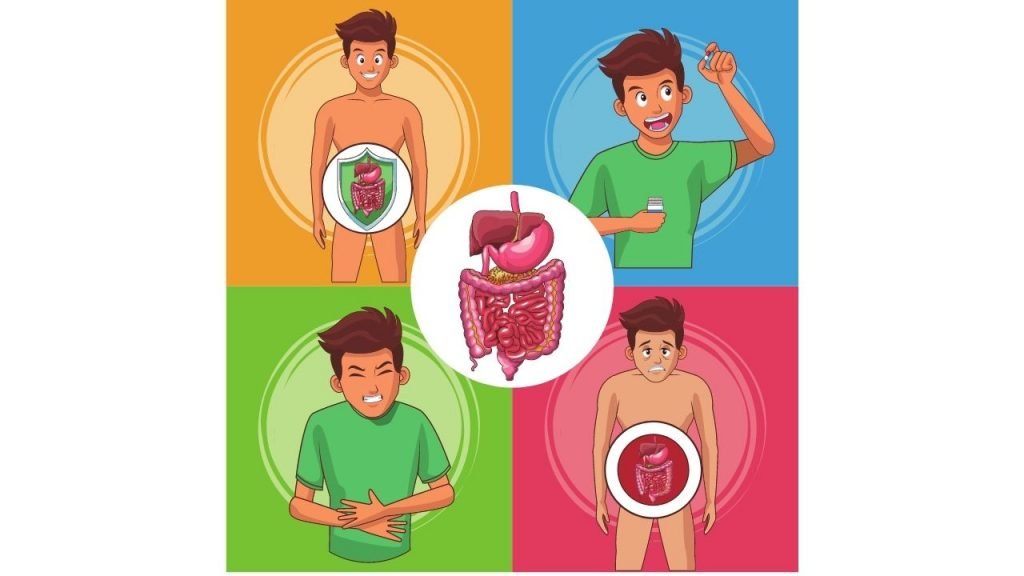
Abdominal pain is the most common term for symptoms affecting the abdominal wall or the organs within the abdomen. To know everything about abdominal pains, you need to know the nature of this abdominal pain, its location, duration, and the times of occurrence that are normally determined by the source and the type of disease that cause them. So every abdominal pain needs review, diagnosis, and appropriate treatment.
Symptoms associated with abdominal pain may contribute to determining the diagnosis, and identifying the source responsible for that.
These symptoms include:
If the abdominal pain is very severe, or when there is bleeding, a serious injury, or a bruise in the abdomen, you should go to the doctor, because there may be a rupture of the spleen or another serious problem.
Abdominal pain during pregnancy can be very serious. So it is important to look for the reason. An ectopic pregnancy may occur before a woman is aware that she is pregnant. Also, when abdominal pain is limited to only one area, this may indicate that there is a more serious problem than that which causes the pain.
Abdominal pain that appears constantly during menstruation may indicate the presence of endometriosis.

The signs that characterize appendicitis, and which appear in most patients, are:
If the patient suffers from the following symptoms, the chances of having appendicitis are minimal:
Many causes lead to abdominal pain, and some ways help identify them.
Listed below are some diseases that cause abdominal pain of a special nature:
This causes the appearance of severe and persistent abdominal pain that spreads in the form of a belt in the back, but it subsides when bending forward.
It may cause severe abdominal pain, which usually appears after taking meals and subsides when there is no food in the stomach.
Acute abdominal pain may result from a hernia, fat trapping, or entrapment of a portion of the intestine in which the muscular abdominal wall is weak.

It is the appearance of abdominal pain that is typical and not clear. It is very aggravated by any movement, or concussion, no matter how mild it is, such as coughing, vibrations while traveling by car, or potholes along the road.
In general, abdominal pain may appear in certain body positions when intra-abdominal pressure rises, or when coughing, for example. The pain lessens when lying down, or when the confined part returns to the abdominal cavity.
Stomach ulcers worsen if acid increases. But the condition improves when taking antacids. Today, it is known that the cause of most stomach ulcers is a bacterium called Helicobacter Pylori. So if antacids and acid relievers do not lead to a complete improvement in pain within a week, you must go to the doctor to give you other treatment methods.
To determine the causes of abdominal pain, we have to go through the following points:
If the abdominal pain is in the upper, lower, right, or left part of the abdomen, this indicates that the cause of the pain lies in the organ inside the abdomen, or in the area where the patient feels the pain.
For example, the pain caused by ulcers is characterized by the appearance of pain in the middle of the abdomen on the upper side (Epigastric pain). The pain caused by a disease in the gallbladder sac is on the right side of the upper part of the abdomen. But the abdominal pain caused by inflammation of the appendix appears on the right side of the lower abdomen.
The nature of the abdominal pain (whether it is spasmodic or unclear) and the duration of abdominal pain (which ranges from short periods or may extend for long hours at other times) contribute to knowing the cause of the pain.
For example, disturbances in the proper functioning of the small intestine or colon cause the appearance of spasmodic pain. But disturbances in the movement of the intestines cause constant intestinal spasms.
Increasing the intensity of the contractions to overcome a partial or complete obstruction, or to effectively push out large amounts of the contents. In people with an acute intestinal infection, that leads to the occurrence of spasms.
Abdominal pain caused by inflammatory diseases appears to be unidentified and persistent.
The time of appearance of abdominal pain with the time of eating indicates the cause of abdominal pain. So patients who suffer from ulcers feel a decrease in abdominal pain after half an hour of eating. As soon as the stomach becomes empty, the patient starts to feel abdominal pain again because no food neutralizes the effect of acid. That is why patients with stomach or duodenal ulcers wake up because of hunger pangs and eat something to relieve abdominal pain.
Similarly, abdominal pain in patients with partial intestinal obstruction worsens after eating, but they feel better when there is no food in their stomachs.
It is important to know if the abdominal pain appeared acute or gradually.

Severe abdominal pain that appears sharp and lasts for a few hours usually indicates a serious condition inside the abdomen, such as:
Abdominal pain that appears gradually is characterized by its appearance as a result of an inflammatory
process in the organs, such as the gallbladder bag or the colon.
Abdominal pain may be a sign of a serious condition. But fortunately, in most cases, the etiology is not serious.
The location of the abdominal pain may help determine the cause, and start the process of diagnosing the disease according to the most common and known diseases that cause pain in that area.
For this purpose, the abdomen is divided into four parts: the upper right quadrant, the upper left quadrant, the lower right quadrant, and the lower left quadrant.
The abdomen can also be divided into three main sections, the upper, middle, and lower parts.
Here are some examples of possible diagnoses of abdominal pain caused according to the area of pain. But we should note that these examples are just symptoms that help guide the doctor to the source of the problem. They do not necessarily indicate the source of the abdominal pain:
The cause may be one of the following:
The cause may be one of the following:

Among the main causes of abdominal pain in the lower right quadrant we have:
Among the main causes of abdominal pain in the lower left quadrant we have:
Some of the main causes of abdominal pain in the upper section are:
The reason for abdominal pain is one of the following:
Among the most prominent causes we find:
Abdominal pain caused by hollow organs such as the intestines or gallbladder sac usually appears intermittently, as is the case with gas pain in the abdomen. But pain caused by solid organs, such as the kidneys, spleen, or liver tends to be more constant and persistent.
Stomach ulcers sometimes lead to pain of a burning nature in the upper abdomen. The pain generally subsides after eating some food or giving an antacid dose.
In mild cases, you can treat abdominal pain at home. But in other cases, you must see a doctor.
To treat stomach pain at home, you should follow these steps:

Generally, an antacid treatment should start to treat heartburn or indigestion. If you suspect that you have a stomach ulcer, start swallowing the medicine every four hours.
You can use a liquid antacid or drink low-fat milk every few hours. If the antacid treatment does not help, try a drug to help stop stomach acid, This does not need a doctor’s prescription. But if this treatment also does not help, you need to visit a doctor.
The key to home treatment is reassessment. All persistent abdominal pain should be treated in the emergency room or clinic. Home treatment is given if the abdominal pain is mild and goes away within 24 hours. If it is determined that it is caused by a virus in the abdomen, heartburn, or another mild problem.
The doctor will do a basic examination of the abdomen, usually, a blood test, and a general urine test. In many cases, the doctor will recommend additional laboratory tests.
X-rays are generally not important in cases of abdominal pain of short duration. But sometimes they are needed.
In addition, there may sometimes be a need to stay in the hospital in order to supervise the patient. In serious cases, an urgent operation is required.
If no problem is found in the initial evaluation, and the patient continues to suffer from abdominal pain, the condition should be re-evaluated.
There are satisfactory results for treating stomach ulcers by using antibiotics to kill Helicobacter Pylori.
We can prevent stomach pain by following these tips:
Leave a comment